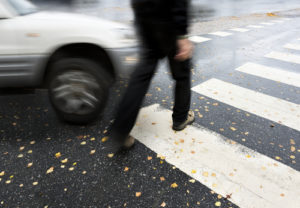
While the dangers of distracted driving are well known by now, fewer people appreciate the dangers associated with distracted walking. According to national statistics compiled by the Centers for Disease Control and Prevention, over 7,000 people die in pedestrian accidents each year and tens of thousands more are injured.
While distracted walking is not to blame for all of these accidents, it certainly plays a part. This is especially true in light of the increasing and increasingly constant use of smartphones. Pedestrians paying attention to their phones rather than their surroundings are at greater risk of a pedestrian accident. A personal injury lawyer knows that this can be especially problematic for pedestrians involved in a car accident because it may end up reducing their ability to recover as a result of a doctrine known as comparative negligence.
The Dangers of Distracted Walking
Although the dangers of distracted walking appear obvious when people stop to think about them, all too often pedestrians do not consider the consequences of their actions. Pedestrians who are using their cell phones rather than paying attention to their surroundings place themselves at increased risk for an accident in a variety of ways.
For instance, people using cell phones are more likely to exhibit dangerous crossing behaviors like failing to look both ways at the intersection or crossing against traffic signals. Additionally, it takes distracted walkers longer to cross the street, which puts them at greater risk for traffic injuries. In fact, distracted walking continues to increase each year, cited as a factor in up to 10 percent of pedestrian accidents.
Comparative Negligence
Pedestrians who are distracted while walking also face a further problem, they may see their compensation reduced if they are involved in a traffic accident. This is the result of a legal doctrine that some states follow known as comparative negligence, which allows a jury to reduce the money awarded to the victim by the amount of fault they believe the victim bears in the accident.
The idea behind the doctrine is that people who cause a traffic accident are less responsible for it if the victim was also doing something careless that allowed the accident to occur.
For example, imagine a driver who makes a right turn on red without checking to see if there is a pedestrian, hitting someone as a result. If the pedestrian was being careful, he or she would be able to recover for all of his or her injuries, but if he or she was paying attention to his or her phone, the jury could decide that he or she was 10 percent responsible for the accident. This would limit his or her recovery to 90 percent of his or her injuries.
Contact a Personal Injury Law Firm for Help
If you have been injured due to the negligence or recklessness of another party or parties, you may be entitled to financial compensation for the losses you have suffered. Do not delay in contacting an attorney, like apersonal injury lawyer from Hayhurst Law PLLC. to find out what legal options you may have.
